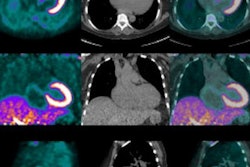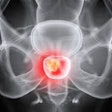In addition, standardized uptake values (SUVs) and FDG uptake on PET/CT of the knees may predict the progression of osteoarthritis.
Many patients undergo FDG-PET/CT for a multitude of reasons, including malignancy assessment, wrote study presenter Brian Nguyen, of the University of California, San Diego, in an email to AuntMinnie.com.
"This study allows radiologists to better interpret the increased SUV uptake as possible osteoarthritis and predict the progression of osteoarthritis as seen in the knee," he said. "It also allows prompt referral to appropriate specialties for assessment of osteoarthritis and rapid management."
Nguyen and colleagues prospectively reviewed shoulder, hip, and knee joint images of 79 patients undergoing routine FDG-PET/CT. Subjects were also asked to complete a questionnaire known as the Western Ontario and McMaster Universities Osteoarthritis Index (WOMAC) to assess their level of joint pain, stiffness, and physical function.
In addition, SUVs were measured in the acromioclavicular, glenohumeral, hip, and knee joints using the Kellgren-Lawrence (KL) grading scale to help determine the extent of osteoarthritis. Follow-up scout images were reviewed and patients were monitored for two years to determine the progression of osteoarthritis based on follow-up imaging or surgical intervention.
In the end, the researchers found that only SUV was an independent predictor of osteoarthritis progression in the knees, while KL scores of scout images added to the ability to identify symptomatic osteoarthritis in the knees.
"As radiologists see this finding across the board on potential osteoarthritis patients, they will be able to interpret the findings and likelihood of progression and effectively manage the patient's upcoming symptoms," Nguyen said. "Essentially, this will enhance secondary prevention of osteoarthritis and end-stage procedures such as joint replacements and perhaps in the primary prevention by catching and predicting it before an official diagnosis."




















